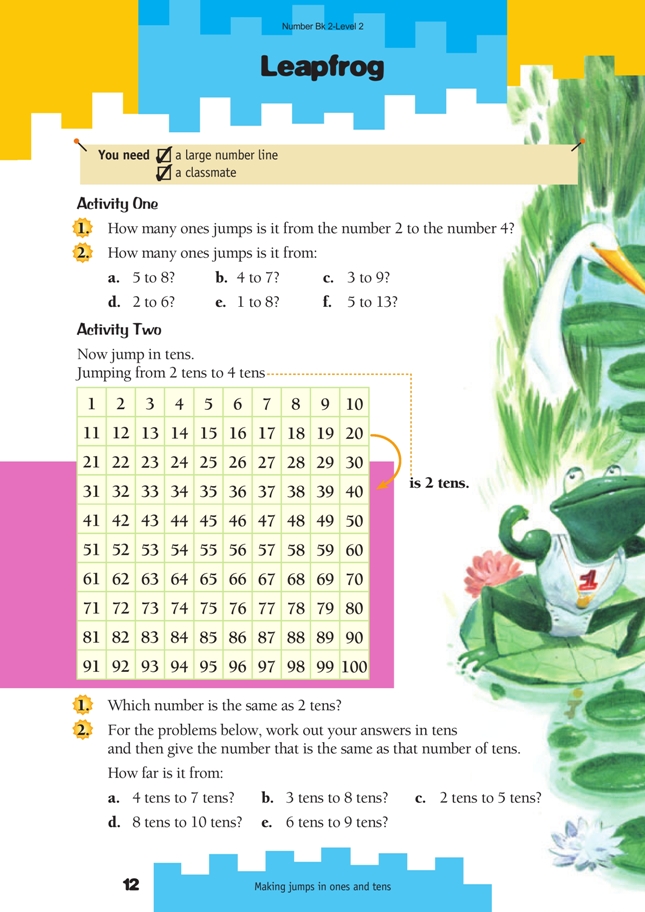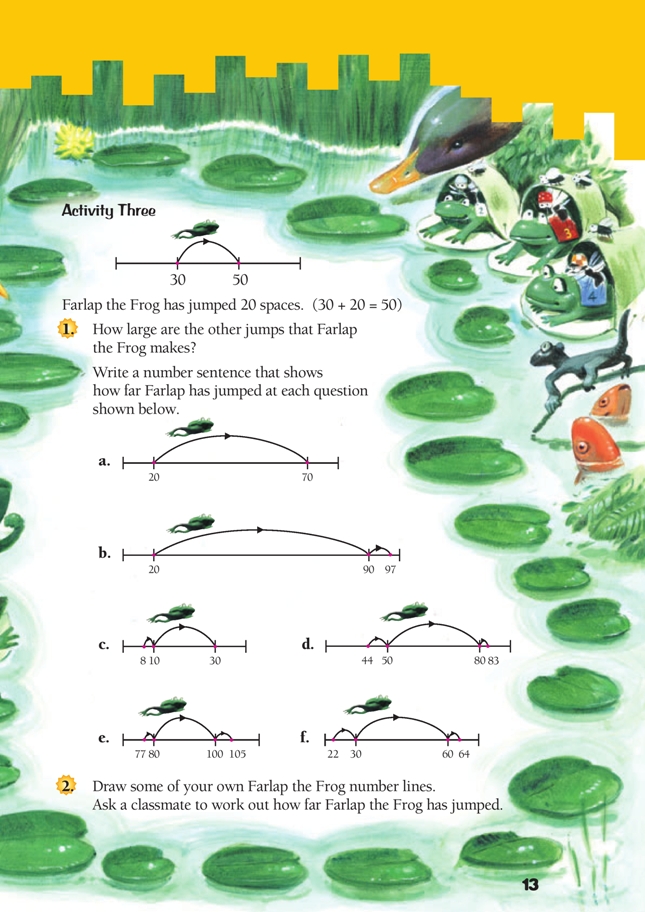This is a level 2 number activity from the Figure It Out series. It relates to Stage 5 of the Number Framework.
A PDF of the student activity is included.
Click on the image to enlarge it. Click again to close. Download PDF (391 KB)
make jumps in ones and tens on a number line
FIO, Level 2, Number, Book 2, Leapfrog, pages 12-13
A classmate
These activities are designed to move students on from making simple, single-digit jumps to jumps in tens and multiples of 10 and then to any two-digit jump. Modelling these on a large number line is very important. (There is a large number line in the Material Master 4-8)
Activity One
The important point in this warm-up activity is to ensure that the students are moving the peg along the line as they count the jumps. Some students start by “jumping” on the starting number, and their answer is always out by one because of the extra jump. For example, for 2 to 6, they jump on 2, 3, 4, 5, and 6 and the answer is 5 jumps, not 4. Encourage your students to use their knowledge of basic facts to predict the number of jumps and then to check it by jumping.
Activity Two
Making the link between the linear representation of a number line and the hundreds board is important. Some students have difficulty moving between the two representations and orienting themselves to each one. Have one student moving up two tens on the hundreds board and another moving up two tens on the number line at the same time. Ask these two students to compare how they’ve moved. You may need to use place value sets to model that two tens is 20.
Activity Three
In this activity, the students are combining jumps in multiples of 10 with single-digit jumps. When Farlap the Frog starts at 8, the first jump is a jump of 2 to get Farlap to a “tidy” or rounded number. Then there are larger jumps in multiples of 10 and sometimes a single-digit jump to finish. Discuss why Farlap has started with a jump of two spaces from 8 to 10. Encourage your students to use the tidy numbers to make it easier to find out how far Farlap has jumped. On the large class number line, ask the students how they would jump from 36 to 73 and mark each stop along the way with a peg. Discuss their reasoning. Modelling the recording of each jump is important so that the students can keep track of the jumps they are adding. (See the diagrams
and recording of jumps in the Answers section.)
When the students make their own number lines, it may be a good idea to start with all the numbers on the line that they are using before introducing empty number lines.
Answers to Activities
Activity One
1. 2
2. a. 3
b. 3
c. 6
d. 4
e. 7
f. 8
Activity Two
1. 20
2. a. 30 (3 tens)
b. 50 (5 tens)
c. 30 (3 tens)
d. 20 (2 tens)
e. 30 (3 tens)
Activity Three
.gif)
.gif)
2. Practical activity

